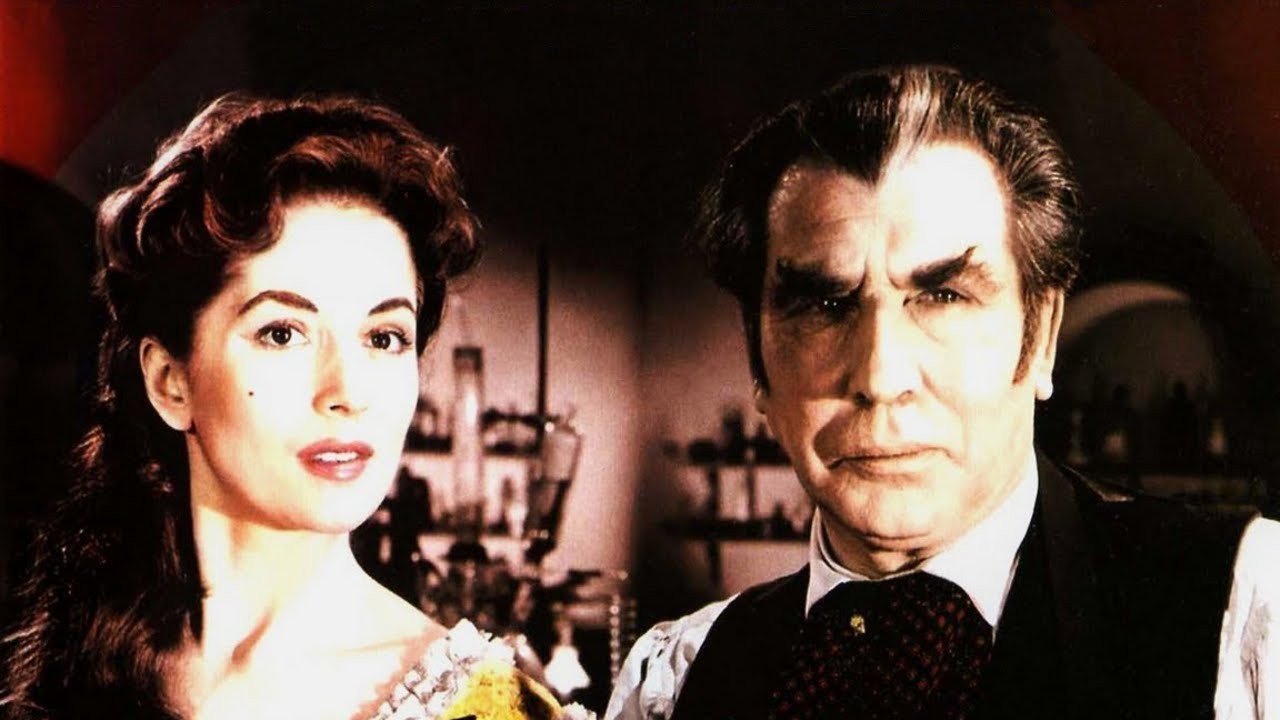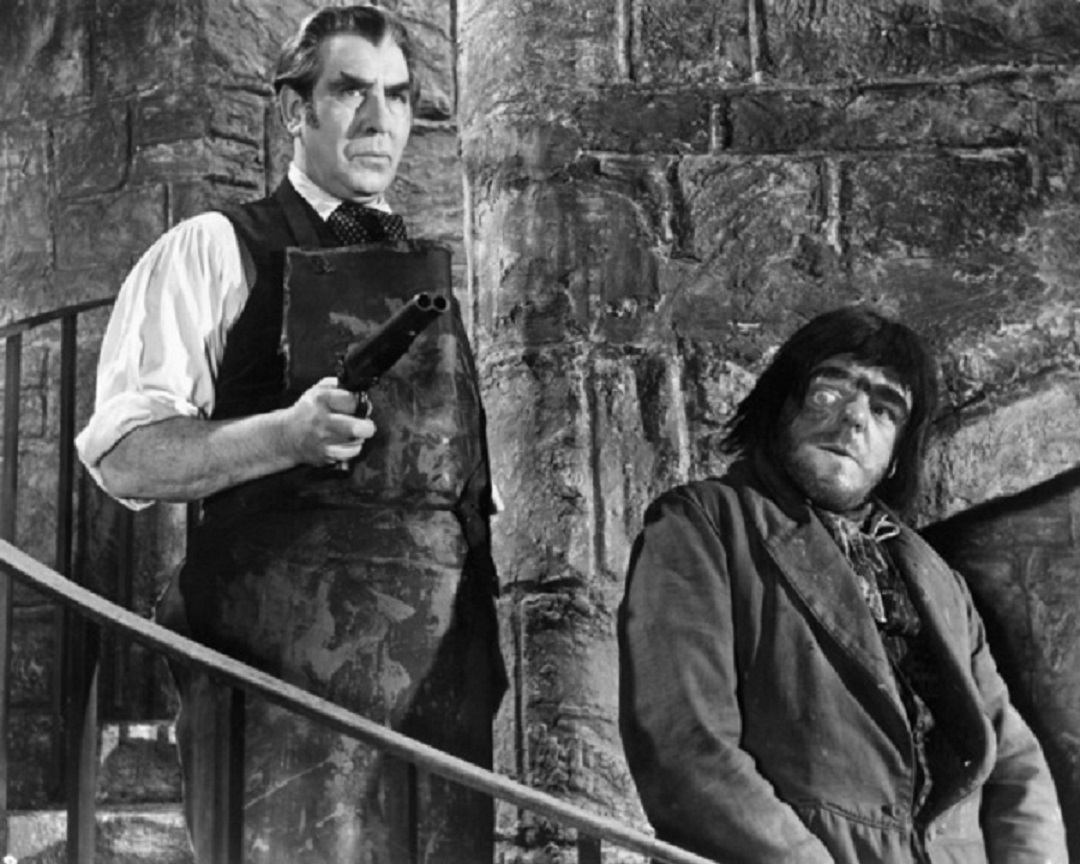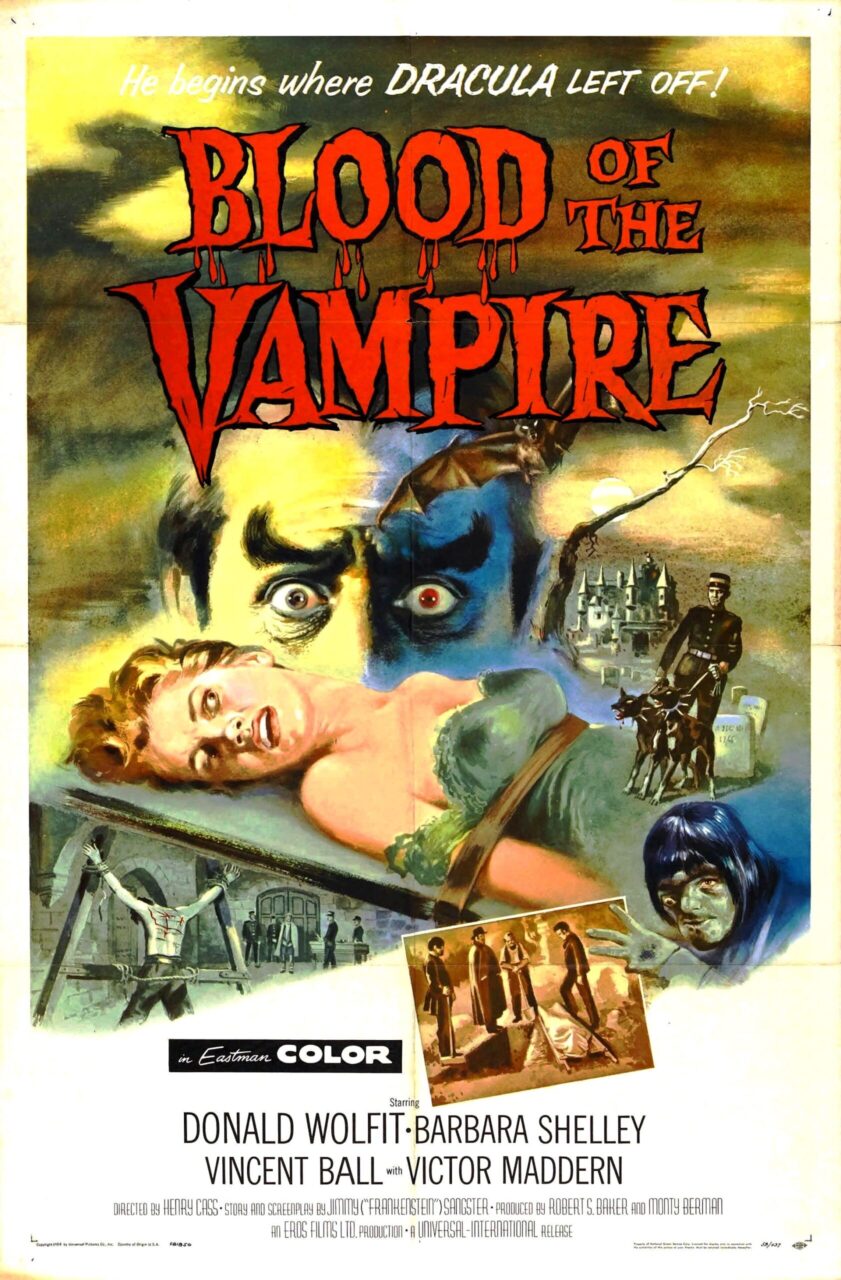UK. 1958.
Crew
Director – Henry Cass, Screenplay – Jimmy Sangster, Producers – Robert S. Baker & Monty Berman, Photography – Monty Berman, Music – Stanley Black, Makeup – Jimmy Evans, Art Direction – John Elphick. Production Company – Artists Alliance.
Cast
Vincent Ball (Dr John Pierre), Donald Wolfit (Dr Callistratus), Barbara Shelley (Madeleine Duval), Victor Maddern (Carl), William Devlin (Kurt Urach), Brian Coleman (Auron), Andrew Faulds (Wetzler), John Le Mesurier (Judge)
Plot
Carlstadt, 1880. Physician John Pierre is sentenced to life in prison on a charge of manslaughter due to an attempt to transfuse blood that went wrong. The respected doctor who could have backed Pierre’s research has written a letter denying all knowledge. Pierre is transferred to a foreboding prison and meets its governor Dr Callistratus. Callistratus has pulled strings to have Pierre transferred there to assist in his research into rare blood disorders. Pierre begins work but hears rumours among fellow prisoners that Callistratus is conducting sinister experiments on them in the locked room beneath his laboratory. Pierre’s fiancee Madeleine Duval enters the prison posing as Callistratus’s new housekeeper to find what happened to him. Through this, it becomes apparent that Callistratus has framed Pierre to have him incarcerated and is scheming to ensure that he stays.
Blood of the Vampire was one of the earliest films from the heyday of the Anglo-Horror cycle. The Anglo-horror cycle was essentially started by Hammer Films with the twin hits of The Curse of Frankenstein (1957) and Dracula/The Horror of Dracula (1958). This sparked a two decade long span where the studio fairly much owned the horror genre. This period also saw many other British studios coming to the fore attempting to catch a piece of the action.
Blood of the Vampire is clearly one of these imitators – to the extent that it employs Jimmy Sangster, who was one of the instrumental figures in the Hammer Films story, having written the scripts for both The Curse of Frankenstein and The Horror of Dracula, as well as many of their and other horror films (see below for Jimmy Sangster’s other genre credits). Blood of the Vampire was regarded as one of the unavailable films among the Anglo-horror pantheon for many years until a print was released to video in the early 1980s and more widely on dvd in 2005.
Due to its relative obscurity, Blood of the Vampire was always an unknown. Once seen, one is surprised by what a good film it ends up being. An impressive budget has been lavished on the film. Director Henry Cass has a great feel for the lush studio bound period sets that Hammer made distinctively their own. It is a shame that Cass only went on to direct one other item in the Anglo-horror cycle – The Hand (1960), although had made an earlier ghost comedy Castle in the Air (1952) and otherwise maintained a career turning out forgettable quota quickies.

Henry Cass has a visual eye that rivals that of Terence Fisher, the cult name to emerge from the Anglo-Horror Cycle. Indeed, Cass instinctively grasps the Hammer style at a time when it was only being set in place by Fisher and others. The cell and jail sets where Vincent Ball is originally incarcerated before being transferred to Callistratus’s prison are constructed and shot in a way that looks impressive and commands the eye.
Jimmy Sangster’s screenplay does a great job of depicting the journey taken by Vincent Ball’s doctor – he going from a background of privilege into a severe and harsh environment filled with casual institutional cruelty, at the same time as the story builds up to the introduction of something it is implied is even worse. The latter half of the film adeptly twists around various plotting surprises – Barbara Shelley going undercover to investigate the prison only to be recognised by the doctor who provided false testimony at the trial; Victor Maddern’s hunchback recognising her picture from locket he took from Vincent Ball; and she then seeing Ball alive in the hall after being told that he was dead.
Part of the effect of the film lies with its memorable offbeat characters. In particular, there is Victor Maddern’s one-eyed hunchback (stills of which became an iconic representation of the film). With misshapen figure and one drooping eye, Maddern walks through the film managing to both command fear as well as sympathy. Particularly good is Donald Wolfit’s central performance. The role creates a distinctive look out of Wolfit’s flabby but harshly hawk-like face, severe beetle brows and a widow’s peak that has been streaked white, while Wolfit balances the part between an autocratic harshness and a disarming geniality.

The main complaint about Blood of the Vampire would be its title concept. What one suspects happened was that the film started out shooting as a copy of The Curse of Frankenstein – the film bears more in common with The Curse of Frankenstein than it does a vampire film – and then during filming Hammer released The Horror of Dracula and this was quickly retitled as a Vampire Film to capitalise on that film’s success. In reality, the only connection is that the film features a doctor conducting blood experiments – there is not much else about it that can be considered vampire-like in the traditional sense. You suspect that a more low-key title that did not spell out what Dr Callustratus is up to would have made for a far better end reveal.
Although it was not the first film on the subject – there was the much earlier The Return of Dr X (1939) with Humphrey Bogart – the one thing that Blood of the Vampire did do, along with The Vampire (1957) around the same time, is popularise the idea of a medical explanation for the vampire. This has played out in a number of other films subsequently such as Thirst (1979), Red Blooded American Girl (1990), tv’s Ultraviolet (1998), Blood (2000) and Dracula II: Ascension (2003).
Jimmy Sangster’s other genre scripts are:– X the Unknown (1956), Dracula/The Horror of Dracula (1958), The Revenge of Frankenstein (1958), The Man Who Could Cheat Death (1959), The Mummy (1959), The Brides of Dracula (1960), the psycho-thrillers A Taste of Fear/Scream of Fear (1961), Paranoiac (1963), Maniac (1963), Nightmare (1964), Hysteria (1965), The Nanny (1965) and Crescendo (1970), and Dracula – Prince of Darkness (1966), all for Hammer. Sangster’s non-Hammer scripts are the alien invasion film The Trollenberg Terror/The Crawling Eye (1958), Jack the Ripper (1959), the Grand Guignol psycho-thriller Whoever Slew Auntie Roo? (1972), the tv movie psycho-thrillers A Taste of Evil (1971) and Scream Pretty Peggy (1973), the occult tv movie Good Against Evil (1977), the occult film The Legacy (1979), the spy tv movies Billion Dollar Threat (1979) and Once Upon a Spy (1980), the psycho-thriller Phobia (1980) and the story for Disney’s The Devil and Max Devlin (1981). As director, Sangster made three films:– The Horror of Frankenstein (1970), the lesbian vampire film Lust for a Vampire (1971) and the psycho-thriller Fear in the Night (1972), all at Hammer..
Full film available here


